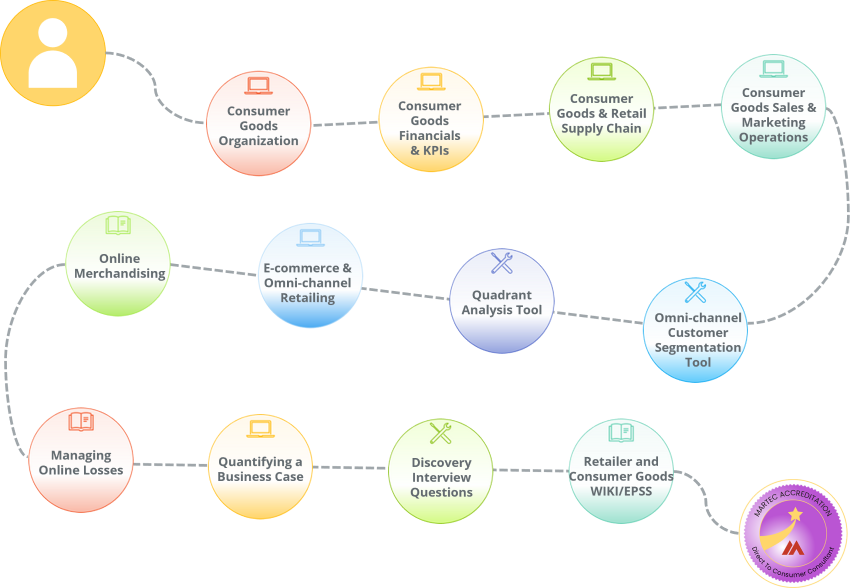Direct to Consumer Consultant
Consumer Goods Consultant - Direct to Consumer Learning Path
This learning path is for consultants, project managers and business analysts who work on implementation projects for clients and need a deeper knowledge of the direct to consumer channel processes for consumer goods manufacturer. It assumes that learners have completed the consumer goods industry learning path or have equivalent knowledge from past projects.
Select any of the circles along the path to find out more about each step.

The Skills You Learn
By studying this learning path, consultants will gain these skills:
- Recognize the scope of and identify the needs of the various job roles in the direct to consumer (DTC) organization.
- Analyze financial statements and identify ways to grow sales, improve achieved gross margins, reduce supply chain and omni-channel expenses, and improve inventory management.
- Analyze direct to consumer KPIs to identify where performance can be improved against competitors, peer groups and historical trends.
- Review the marketing operations to improve customer segmentation, customer communications and messaging, web site execution, page and overall space allocation, promotion planning and execution.
- Review customer service processes, call center processes, and evaluate the use of data analytics to reduce online fraud, shrinkage and excessively high returns levels.
- Use quadrant analysis tools to identify the key IT systems in CG companies needed to support identified performance improvements in DTC operations.
- Quantify potential improvements and their associated implementation costs to produce a robust return on investment analysis.
